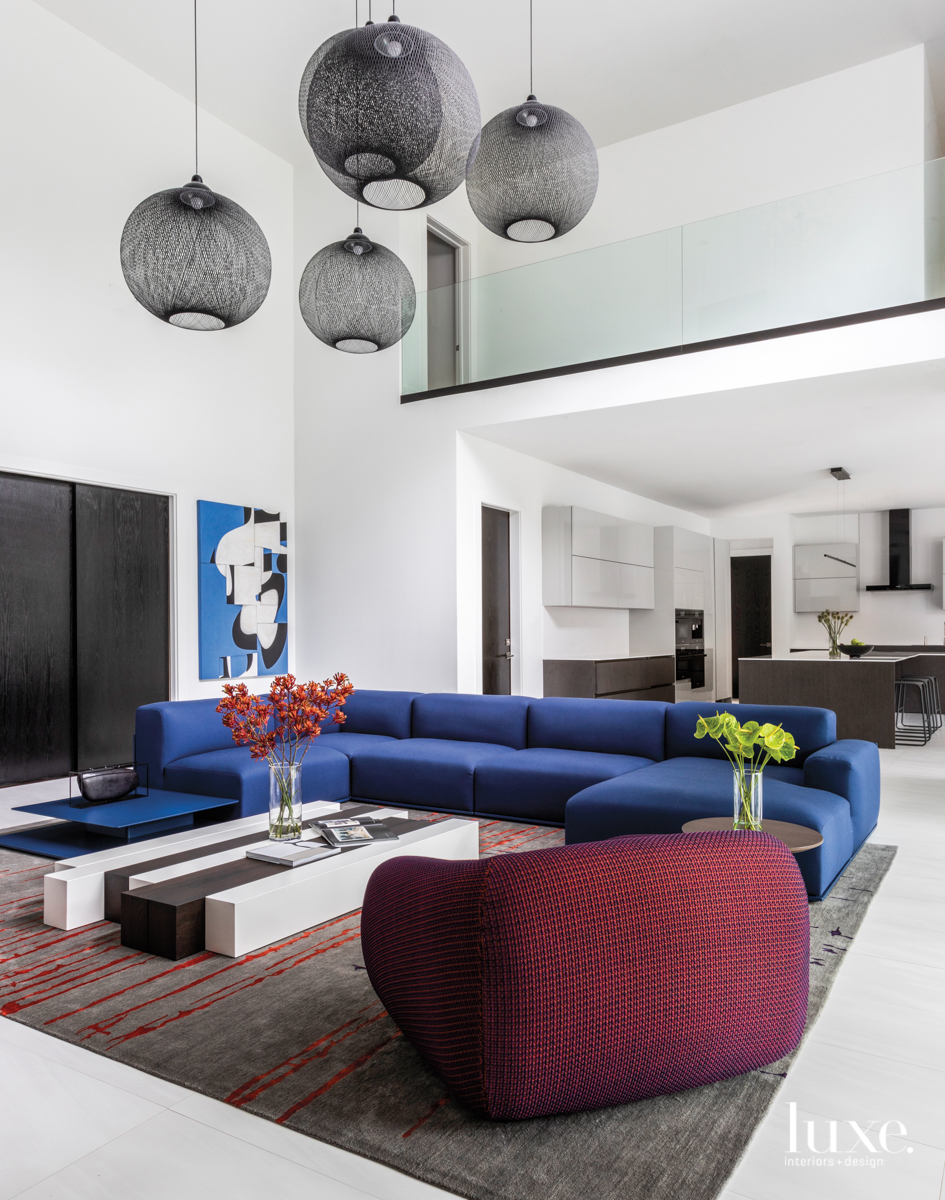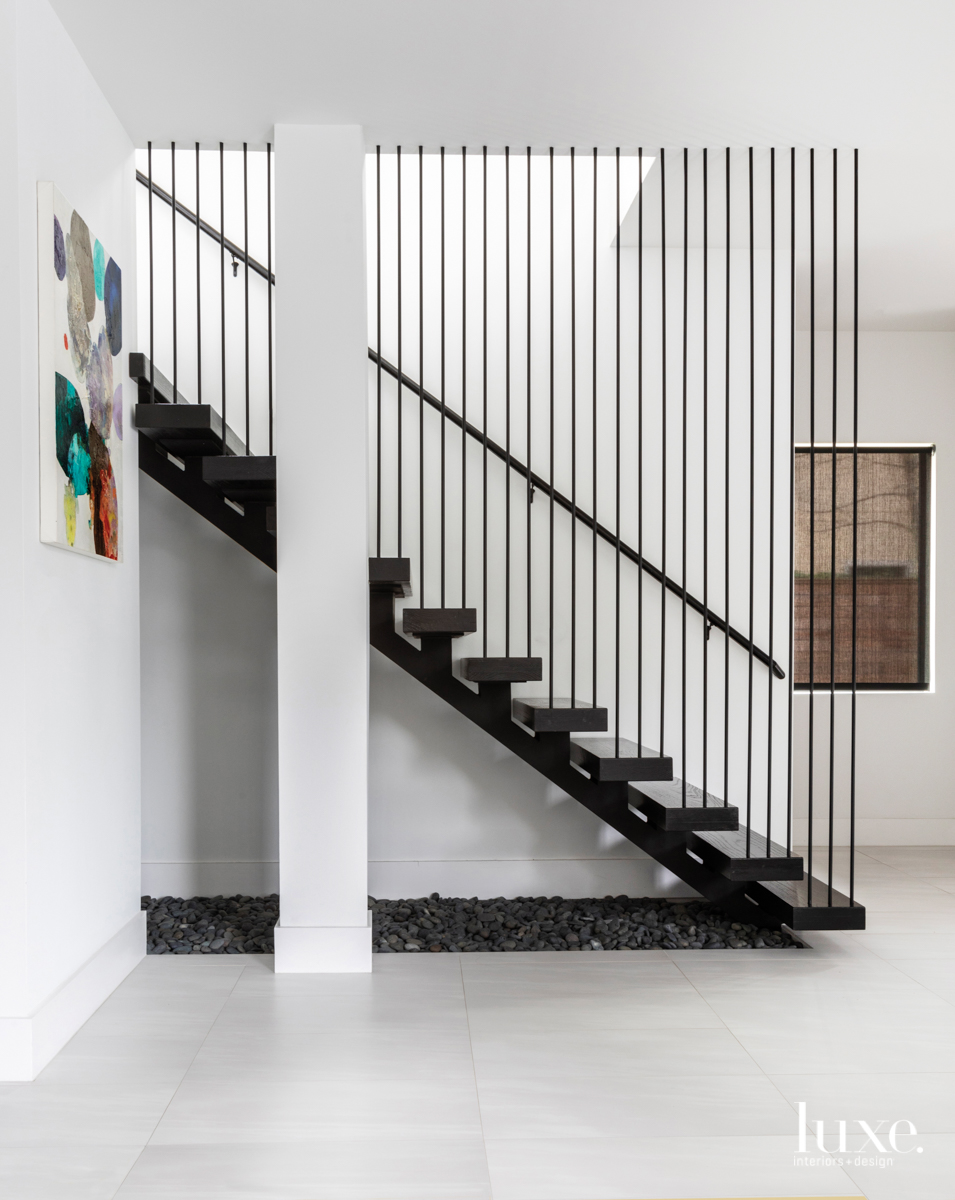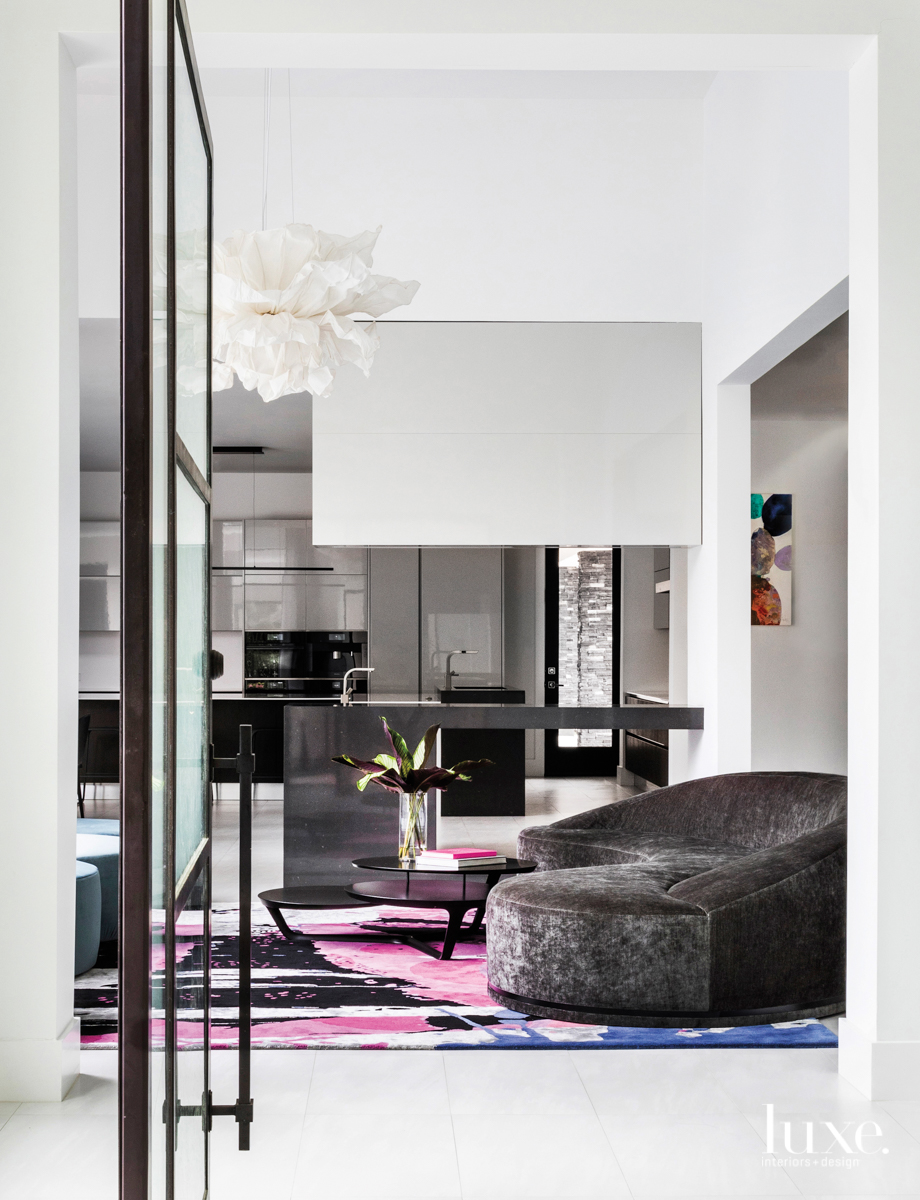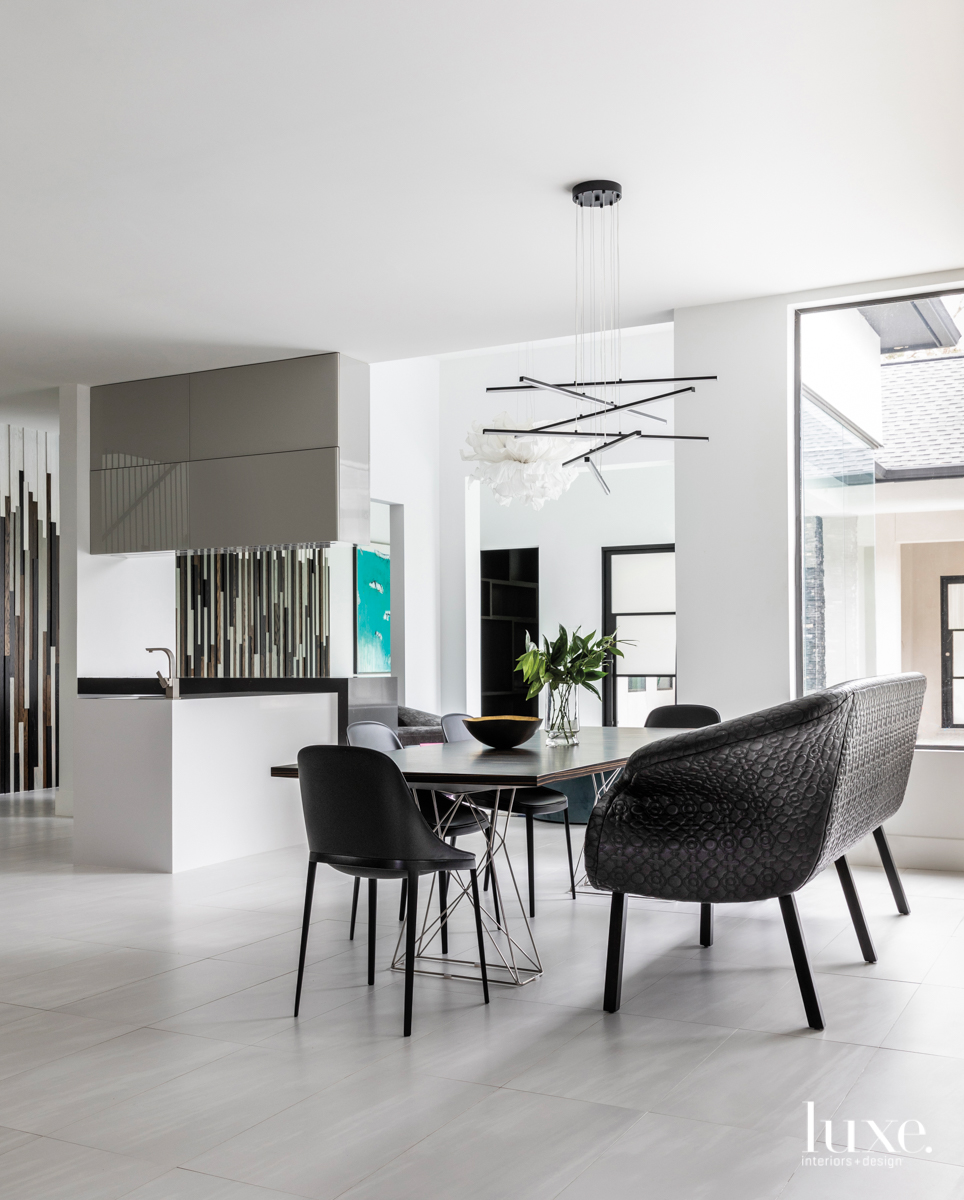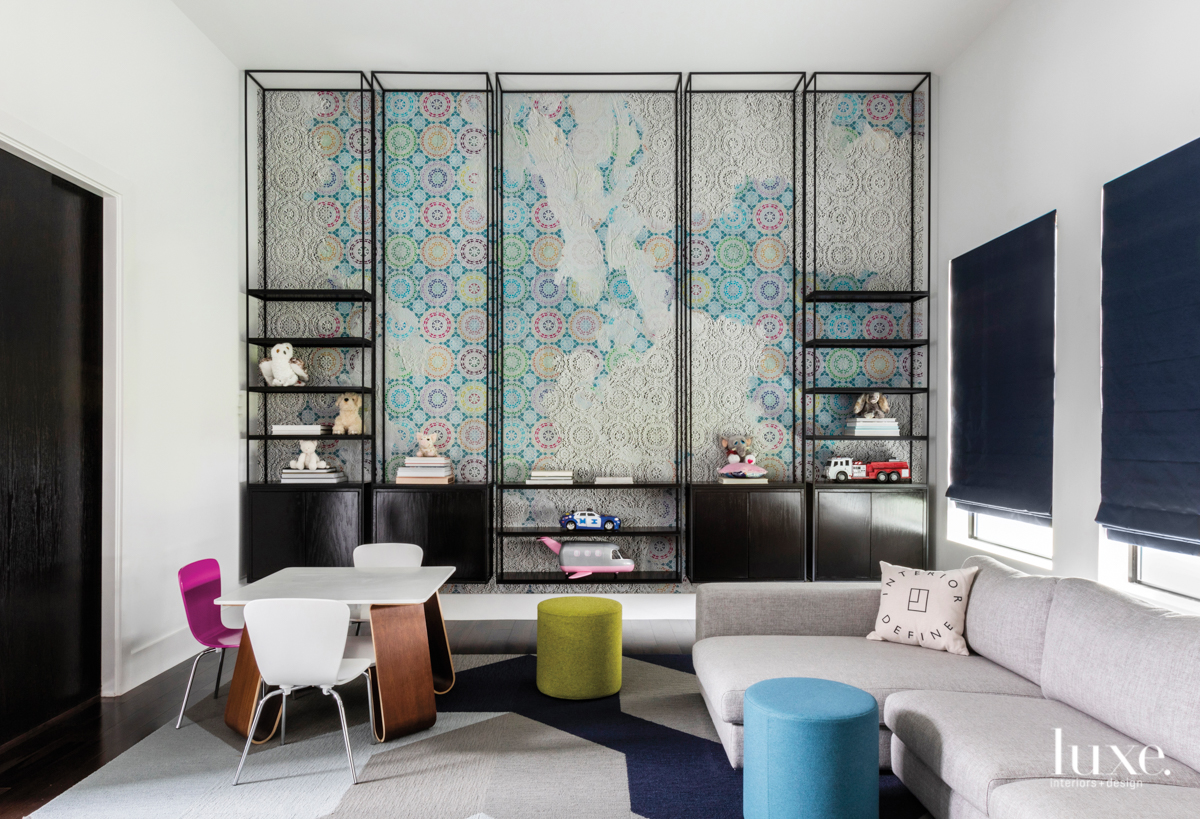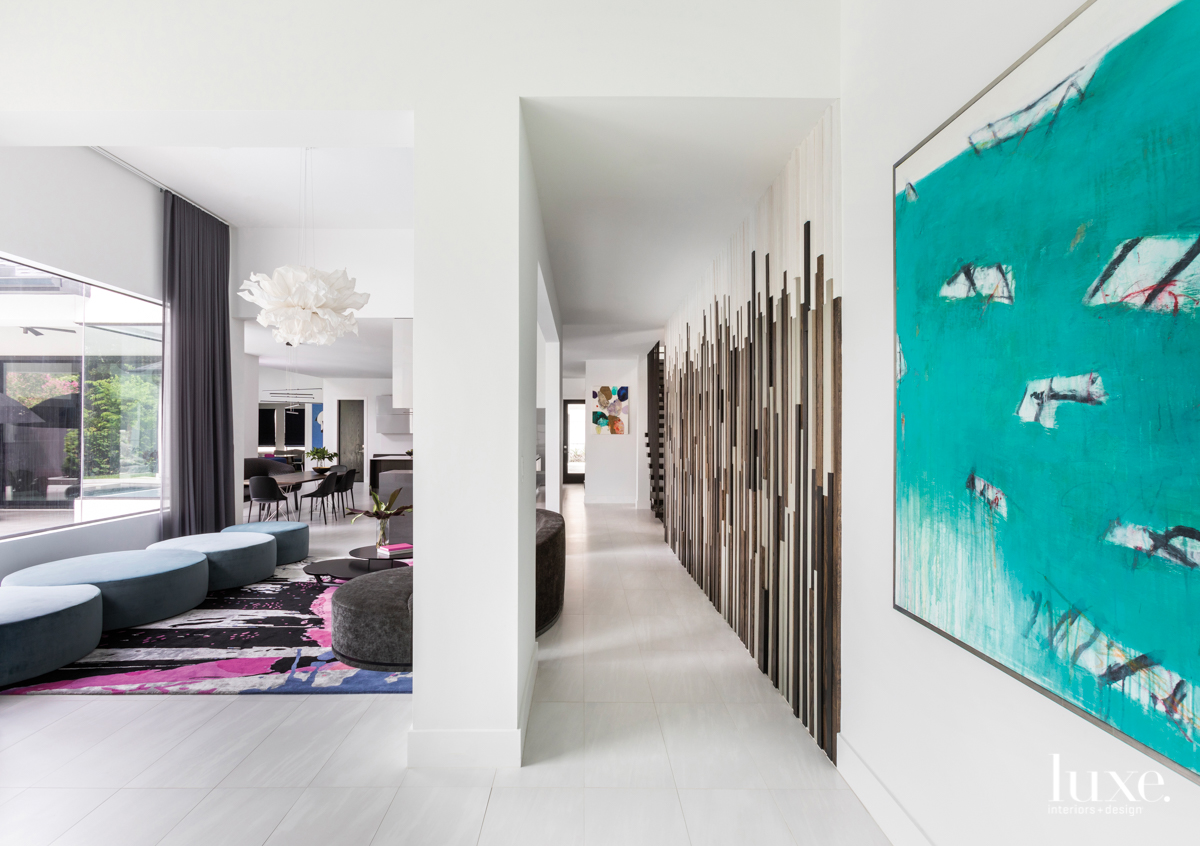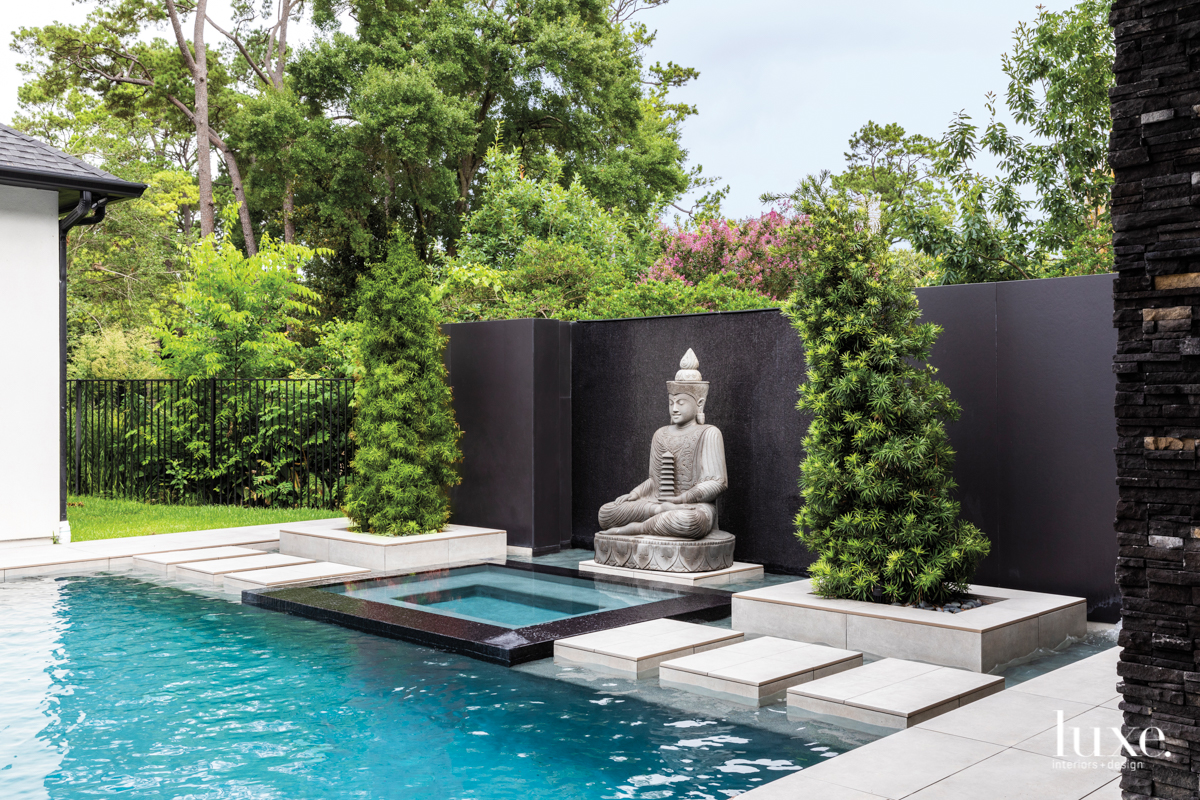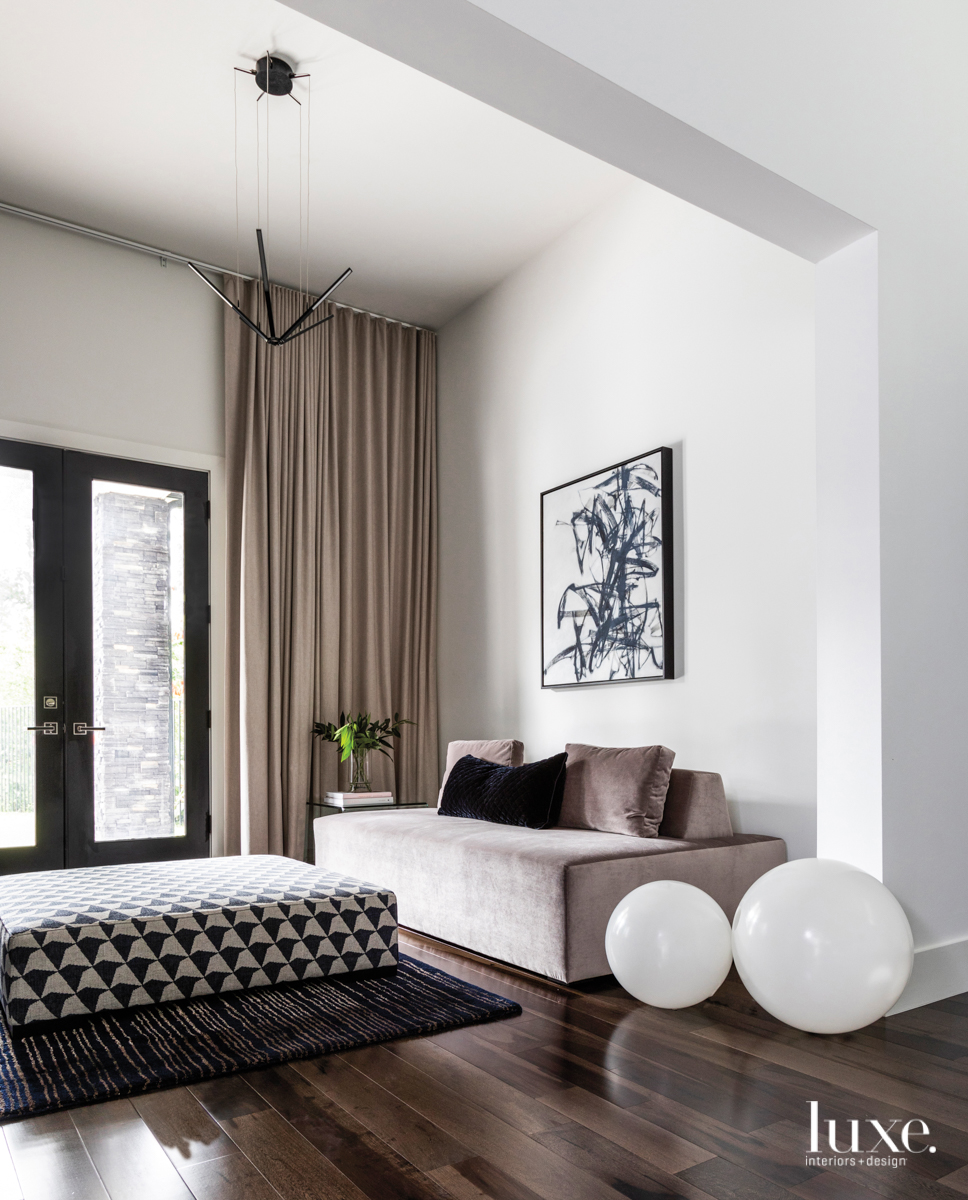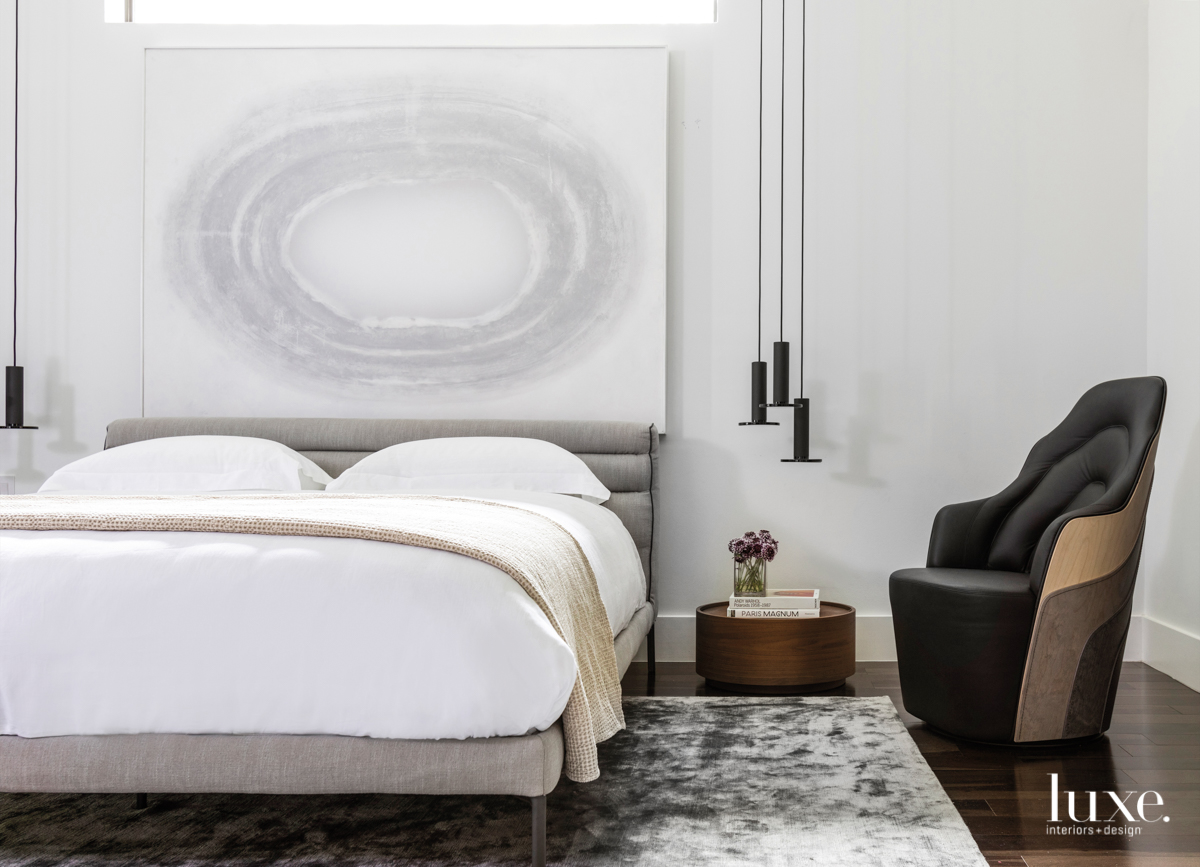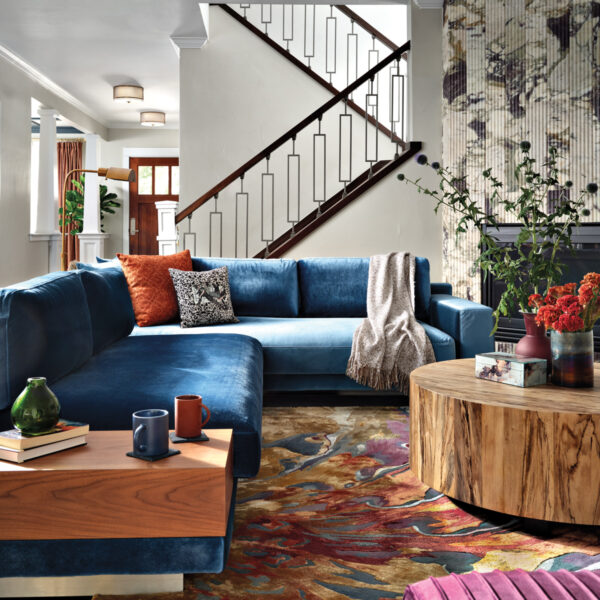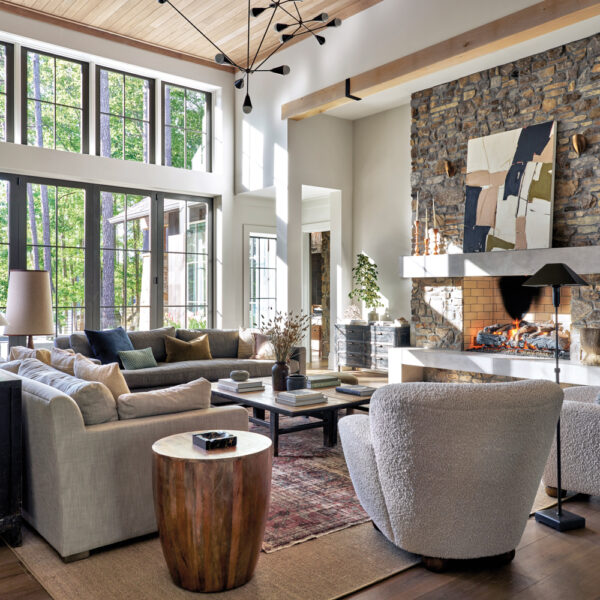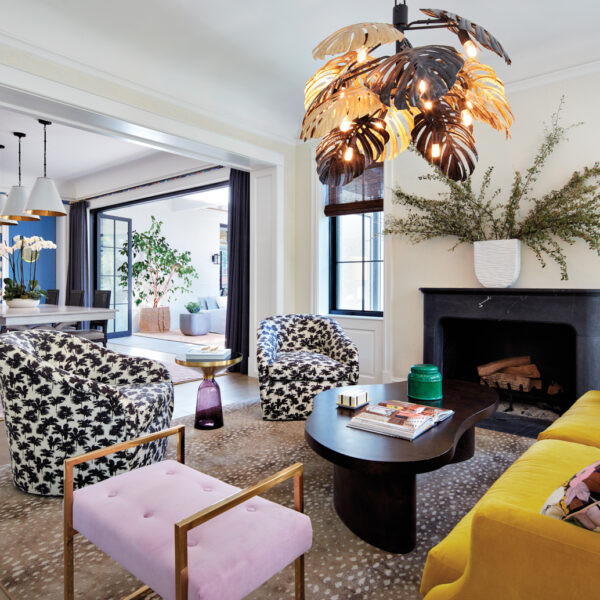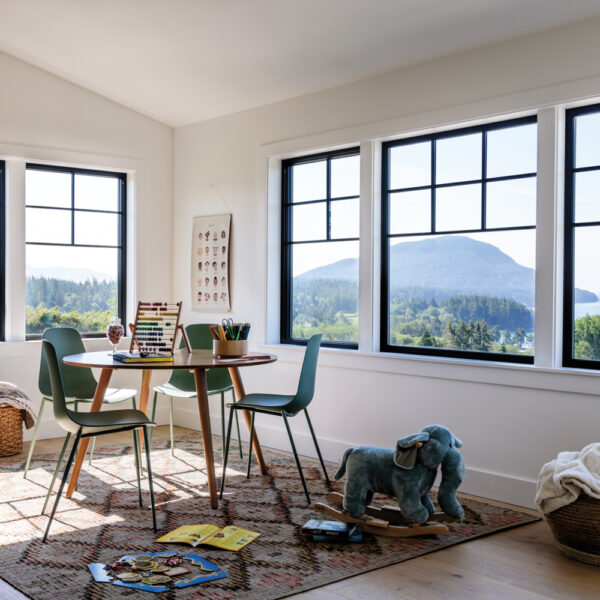Design, like most arts, succeeds through revision. This rings true for a project in Houston, where a lot sold by a design-build company came with a floor plan that was not quite in tune with a young family’s needs. “The plan was very traditional,” says designer Nina Magon, tasked by the clients with updating the architectural drawing before construction began. “We wanted a calm, Zen space,” says the owner, “as well as clean lines and an open layout that allowed for a free-flowing energy and family togetherness.” Luckily for the owners, Magon understands how color and spatial planning can impact the spirit of a home. And she was able to achieve what she describes as “a conversational-style layout,” with more natural light and larger windows, which can be viewed and appreciated from any point in the residence.
The notion of better energy and flow served Magon as a guiding principle at certain crucial aesthetic moments. An example is the original plan for the staircase, “which essentially closed up the house by including a wall,” recalls Magon, who opted to open up that wall and create a floating staircase with a custom wire railing that extends to the ceiling. Beneath the stairway, the designer evoked the serene aura of a Zen rock garden by spreading an eye-catching bed of smooth dark stones, while other innovative earthy elements nearby include an installation of pine strips stained in three different shades and vertically staggered along the entrance corridor wall that leads to the stairs. Both the stone and the wood help bring depth and texture, not to mention an element of surprise, to the minimal design.
Natural light is also energy, after all, and it was “extremely important to the emotional state I want my family to experience on a daily basis,” the owner notes. To allow sunlight ascendance indoors, Magon tweaked the plans to include clerestory windows along the structure’s roofline as well as enormous windows on both its front and rear facades. The designer also erased a wall in order to open up the kitchen to the great room and allow light from multiple angles to flood into the space, which she outfitted with black and white surfaces in keeping with the request for a streamlined vibe throughout. “Clean lines were really key,” explains the owner, “in helping to enhance focus and stillness and create a sense of peace for my family.”
Once the architectural spaces were revised, Magon set her sights on furnishings, focusing on a few key pieces that would add drama and serve as a vehicle for splashes of color. While Magon tends to use color sparingly–typically only two or three shades, with greenery being one of them–it’s not without bravado. In the living room, the designer deployed a vibrant blue hue in the form of a bold Paola Lenti modular sofa, which has a wood-frame back lacquered the exact blue shade of the upholstery that extends into a low two-tier side table. Next to it, a Paola Lenti chair in a deep wine color begs you to get comfortable and settle in. “These minimalistic architectural pieces are interesting by themselves,” Magon observes, “and even more interesting when paired together.”
In the master bedroom, Magon dialed back the palette to neutral tones for a more tranquil feel in keeping with the owner’s desire for a sense of calm. However, the designer again chose a signature piece–a bed by Molteni & C–as the focal point. “I love Italian furniture,” confesses Magon. She flanked the bed with a trio of long black metal pendant lights evoking the linearity of the staircase railing she designed. And the master seating area opens to a balcony overlooking the swimming pool, which Magon also had a hand in bringing to life–down to the Buddha sculpture that presides at one end and reiterates the home’s Zen-like quality.
Throughout the process, Magon remained mindful of the home’s overall harmony. “When owners call us about modernizing a traditional design, we do as much as we can without creating two looks from interior to exterior,” she says. While she couldn’t begin entirely from scratch, the designer did select dark stone facing for one of the exterior volumes and change the front door to a pivot door for a forward-thinking look. Her alterations resulted in a dwelling that “doesn’t feel like a typical American house,” Magon says. “There’s a real sense of arrival when you walk in.” For the owner, the outcome is a testament to the power of design. “You can create a space to match the feelings you want to experience on a daily basis,” she says, “simply through the elements you select for your home.”

